HOMAGE TO BILL McKIBBEN
Suzannah Lessard
Though Hurricane Irene is long past now, I saw in a recent tour of her course that the movement of water across the flat and fertile Schoharie Valley remains recorded in the corn—dead brown, stripped thin and pasted to the ground as if still streaming in the hell bent currents. In an otherwise green landscape, with autumn colors appearing, the corn was shockingly colorless–February drab. Though its death was recent, the corn was a long dead color. In some places the force of roving water had cut it off at half-mast, shelving it; and then beyond that topping it off, then flippantly whacking it, leaving behind a perfect wave. Beyond the crests the corn remained standing, like a normal crop aside from its hue. The wave-fossils had the romantic look of ocean: something wild that settles the heart and gives a sense of being rocked in a cradle of transcendence. Yet in the aftermath of the storm, the underlying question that no one could answer was whether this was transcendence or climate change. It’s just a question. No one can say of a particular bit of weather whether it’s “natural” or not. The hallmark of this new experience of nature is ambiguity—is it or isn’t it? The big wholesale shed where usually at this time there are heaps of squash, eggplants, kale, leeks, pumpkins, beets, and corn was empty, closed. Some vegetables survived drowning but could not be sold because they could have been contaminated in the flooding. Looking out from the empty shed, I saw the shape of the waves and the force of the current in the corn as a wonder. In the next, I saw it as art of a strange kind maybe: the plaster cast of an invisible sculpture in the contemporary global museum.
As the cold weather comes in, the pattern in the corn will soften. By the time February comes around, the dead color will be normal. Some farmers will find ways to make it through the winter despite the loss of the year’s harvest—they will start over again in spring. But some will not have the financial wherewithal to resume. Other farmers, broke, will sign leases with gas companies allowing hydraulic fracturing for natural gas on their land; notwithstanding that “fracking,” as pursued in other states, has poisoned local water and even some rivers. Farmers care about water: some otherwise might have resisted, but what are they to do? The Main Street stores in the valley towns, Middleburg and Schoharie, were dark. The Grand Union between the towns was closed. A few stores will reopen but not all—not by a long shot, probably. In these ways Irene’s passage will be written on the landscape more lastingly though maybe not so visibly: communities thinned out, farmland gone to scrub, aquifers compromised, the need to drive a long way for food. It will take more thoughtful eyes to see that deeper flood record. The suffering is the same either way, the losses are the same, but do the thoughts of the eyes change if the writing is seen as that of nature herself or as our own? Does the heart shift differently? Is there a double meaning in compassion?
Prattville, a small town south of the Schoharie Valley, was very hard hit, especially the houses. By the time I went through, the National Guard was gone, the Red Cross was gone, people were no longer living outside, and a widely reported mood of deep, stunned rejection had given way to industry. In Prattville work was happening everywhere—banging and hammering and wheelbarrows pushed around. Even the terrible detritus of ruined life itself in horrid piles conveyed a restoration of order. Everywhere were volunteers. The work was hard, nasty.
Almost all workers wore surgical masks and heavy gloves against not only dust but contaminants. Many of the workers were women, many of them not young. Some looked strained and tired, but there was steadiness in the fatigue: they were in for the long haul.
The grocery store was open again. One lane of the girded bridge across the recently treacherous creek was open, the other side draped in white canvas. This gave it a windjammer look, albeit one of strange construction: a land-windjammer, maybe. The bridge sits high: the creek in the storm must have been as high as the bridge. “It was a hundred-year storm,” people say; a reassuring idea in a number of different ways, including the likelihood that we won’t have another in our lifetime. And then: “Who ever heard of a hurricane striking so hard so far inland?” The creek bed, in the meantime, was an apocalypse of a more permanent kind than the waves in the corn. Drastically widened and raw, it was still voracious-looking, though a place where it had swerved into the road was already shored up with tons of rock. The creek itself was a peaceful rivulet meandering down the middle of the new chasm, lost in little stream-thoughts as it found its way far beneath the land-windjammer.
The houses of Prattville were never grand, but they were fine solid dwellings, capacious in the way of a more free-breathing era, spaced out comfortably with open pretty interlocking yards. They had about them the air of good order, of modest domestic life on sound foundations. They spoke of the world as a hospitable place, just as they themselves extended hospitality. They spoke of the goodness and reliability of an accumulated way of life. They offered an evolved form of shelter from more than just weather. Now one had been carried off its foundations to an altogether different place. Another was half off, with the look of having fallen to one knee. Others were in place, but with a disturbing lack of resolve in the area of connection between house and foundation—porch steps stripped away, darkness showing along the sills: something weak just where you expect a house to be most strong. Doors and windows were open; not to let a clement day in, but to let foulness out. The interiors had a dank lightlessness, a gutted look even when they weren’t gutted.
Probably most of these houses will be restored, though some are irrecoverable: No work was going on in the house on one knee. But look at this industry, this resilience! Surely in the long term the record of disaster will be expunged. Houses will be refounded, plumb lines restored, open doors and windows once again bespeaking a hospitable world. Visitors in the future might be taken down into basements where they could be shown some hidden but remaining message left behind by the rapacious flood—a curiosity. Everyone, including me, looks forward to that. And yet I want to see the houses as they are now—hieroglyphs of vulnerability—on sheets of commemorative stamps. People speak of natural disasters as “tragedies” but, in truth, if the cause is a vagary of nature they are misfortunes. Their meaning is limited. They do not arise out of tragic human flaws. These houses, on the other hand, may indeed be tragic. In that they, like the waves in the Schoharie Valley, are a work of art of a kind.
I drove across the bridge and just a short way up a wooded hill, and then around a corner into a more open area of settlement. There the world was as it had always been: the picket fences upright, the lawns ungouged, the houses nestled: where we think we live. This too is an installation in the global museum.
I have a cottage in a village in the mountains East of Prattville. Returning there I felt a similar strangeness to the peaceful scenes just above Prattville. There the creek bed held the torrents. Only one part of a lane along the stream was taken. Otherwise, the village was left whole. During the storm there was concern about the earthen dam that holds back a lake just above the village. If the dam had given, much of the village would have been washed away. The supervisor of the township, the trustees of the preserve that includes the lake, were up there in the tempest checking, ready to issue an evacuation warning. During the storm I had thought it might be nice to have an engineer up there, but in fact the dam held very well.
The day after my tour, a warm, still, Indian Summer day, I went up to the lake. It was mirror-flat. I set out in a kayak I keep there to examine the shoreline. At first I noticed no change. Then it seemed to me that there was something different, but I couldn’t say what. The shores of the lake are forested, though once it was pasture. Stone walls run beneath the evergreens and hardwoods. From a boat you can see into the forest, a low sightline, a few feet above ground level, up to first branches. When trees are in leaf especially, interior details are quickly lost in darkness. But now there was an unseasonal transparency, familiar yet wrong. During the flood, the lake had invaded the forest, stripping leaves off the trees to a height of ten feet. As the ground rose, of course the ceiling was lower, but you could now see far more deeply into the forest. This transparency was not cast-like as in the case of the corn or the creek beds, nor was it a hieroglyph as in the case of the houses. But it was similar in that it took its form from what wasn’t there now. This spectral lake in the woods had the quality of a dream and yet as my eyes tuned it became, in its way, more vivid than what was actually there. This leafless transparency had body. So powerful was it, that once I had seen it I had to adjust my eyes to see the dry forest. My image of the lake in the woods was calm, enticing—I imagined paddling in it—but then I had to correct my picture. Orange lichen on trunks, scrubbed off cleanly to flood level, showed—as did, in fact, the stripped branches—that the water in the woods had not been peaceful.
I paddled over to the low-lying, less densely forested shore where the creek enters the lake. Beavers have been at work here for a long time, damming the mouth of the creek and causing their own floods that have killed some trees that stand forever pointing witchy fingers skyward. An eagle lives back there and a great night heron is often to be seen on the shore. It’s an intricate intermediate area of marshy grasses and bracken and ad hoc shrubbery. The trees that have survived the beaver-work are not the hardwood and evergreens but individualistic—a massive ancient willow in a state of perpetual patriarchal collapse, a stunted apple tree, that day laden with small bright fruit. The shore there, while soft, has, for as long as I have known it, been un-perforated, continuous. Only when I was very close did I see that it had been changed by Irene. Now there were hidden openings into watery passages behind. I poked into one. This was a tiny change and yet even a slight alteration in a familiar place can startle: can be like opening a book you know by heart to find something entirely new written on one of the pages.
I thought I was going nowhere and would run aground fast in the soft grassy maze. But floating around a corner I encountered a great dump of mid-sized boulders, a kind of shingle.
Everything about this was startling. The rock around here is flatstone but these were rounded. The flatstone is dark, the boulders were bright light gray. Even in streams, inland stone has intricate accretions; is living, subtle. But these were scoured, sterile. Furthermore, they expressed crude aggression in this otherwise soft place. This was quite far from the normal creek entrance to the lake. I knew immediately that it was an alternate course carved under duress of Irene, though I was still left with lots of questions. Where had these boulders come from? Had they been unearthed by the torrent? Is this what lay under the ground here? Had they been carried here from somewhere else by force of current? And where, exactly, had the alternate course left the stream? This had to be investigated.
The shingle was above my head as I sat in the kayak, steep banked, the water deep right up to it. I sat up on the body of the kayak to get out, but not carefully. The boat began to wobble and I went over. But even if you are fully dressed, a dunk in a lake on a warm autumn day, though humbling, is not such a terrible thing. I scrambled onto the shingle and clambered up and then pulled the kayak up after. Standing, I saw that indeed the boulder-bed continued, somewhat waywardly, a watercourse in stone through the berried bushes and the bracken. It was of a size that bore no relation to the creek as known—as if an interstate had suddenly branched off a country lane. Even into the woods, the highway of boulders had left no trace of what had been in its path—no trees or bushes poking up through it: nothing. Only this record of the force of the water, recorded in the boulder-road.
Not all stones were settled. I had flip flops on. I was dripping. You could twist your ankle in a moment here. Walking was strenuous. I couldn’t look around much as I had to watch carefully where I put my foot. In the effort I forgot what this was. But after a while I stopped, got off the stones, got up on a bit of normal land and looked about. I knew this terrain well but the way the new creek bed carved through it disoriented me. What stone wall was that? Where was the normal streambed? I saw other highways. One inexplicably swerved, then ended abruptly right there in the woods in a pile, a swerving wave again but this one in boulders. This was like some crazy public work commanded by a mad dictator with a short attention span; obsolete almost as soon as it was created and then deserted. These highways will not be used by the water again for a very long time. Or maybe often.
Read Suzannah Lessard’s reflection on The Riggio Honors Program: Writing & Democracy.
Suzannah Lessard began her career as a writer/editor for the Washington Monthly and was a staff writer at the New Yorker for 20 years. In 1996, she authored Architect of Desire: Beauty and Danger in the Stanford White Family, published by Dial Press. In recent years, her articles have appeared in the New York Times Magazine, Architectural Record, Architectural Digest, the New Yorker, and Wilson Quarterly. She has taught writing and led master classes at Columbia School of the Arts, Wesleyan University, The New School, George Mason University, George Washington University, and Goucher College, and has co-taught a seminar on Trials in Literature at Georgetown University Law Center and Fordham Law School. She recently received an Anthony Lukas Award to write a book about the decentralization of the American landscape (to be published by Dial Press).
Homage to Bill McKibben / Suzannah Lessard
- Categories →
- Faculty
- Works
Portfolio
-
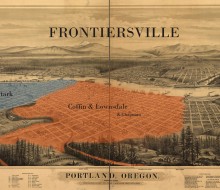
Frontiersville

-
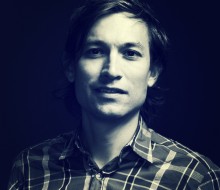
Civic Engagement / Luis Jaramillo

-
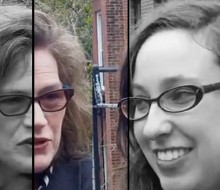
Elizabeth Gaffney in Conversation with Jessica Sennett

-
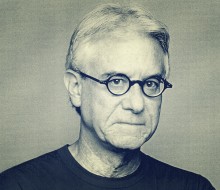
A Trip to Hibbing High / Greil Marcus

-

Literature in Evolution / Lena Valencia

-

Transmissions: The Literature of Aids / Josué Rivera

-
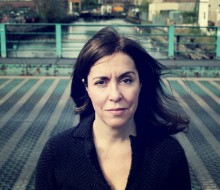
Four Poems / Catherine Barnett

-
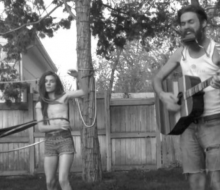
Christopher Pugh: To Colorado

-
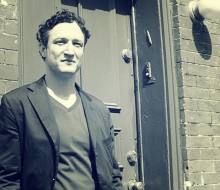
Animal Farm: Timeline & Bias / John Reed

-
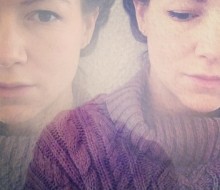
She Hath Writ Diligently Her Own Mind: Elizabeth Childers / Bean Haskell

-

Bob Dylan’s Memory Palace / Robert Polito

-
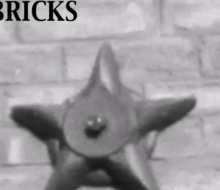
Ari Spool: Bricks

-
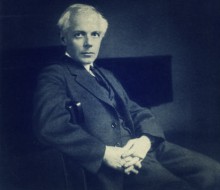
Revisiting the Final Years of Béla Bartók / Liben Eabisa

-

Conrad Hamanaka Yama / Zoe Rivka Panagopoulos & Ricky Tucker

-
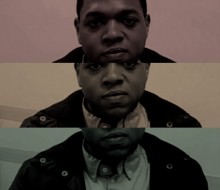
Community

-
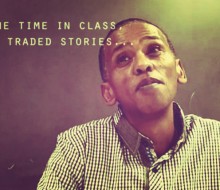
Class Stories

-
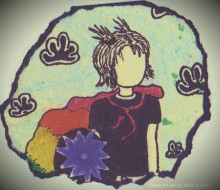
No Scripts / Bean Haskell

-
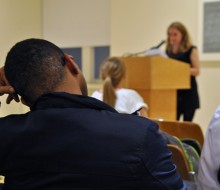
Spring’s Last Words: Riggio Student Reading / Ashawnta Jackson

-

GPS / Patricia Carlin

-

Midway / Laura Cronk

-

A Certain Rainy Day / Zia Jaffrey

-
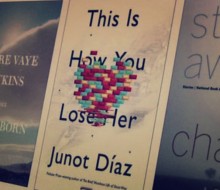
The Story Prize

-

The Next Flight / Jefferey Renard Allen

-
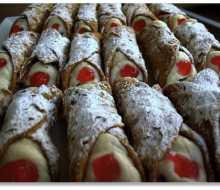
The Inquisitive Eater Blog First Year Anniversary: March 18, 2013 / Jessica Sennett

-
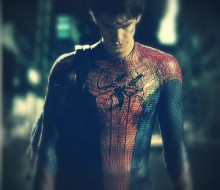
Riggio Forum: Sean Howe / Natassja Schiel & Jessica Sennett

-

Down the Manhole / Elizabeth Gaffney

-

He Saw Me / Ricky Tucker

-

Nonfiction Forum: Tom Lutz / Ashawnta Jackson & Nico Rosario

-
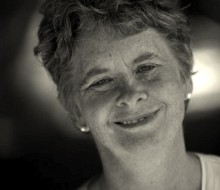
Homage to Bill McKibben / Suzannah Lessard

-
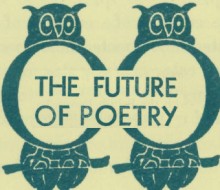
The Unsolved Mystery of “Epitaph to a Love” by Mildred Green, 1948 / Jessica Sennett

-

Dancing About Writing




